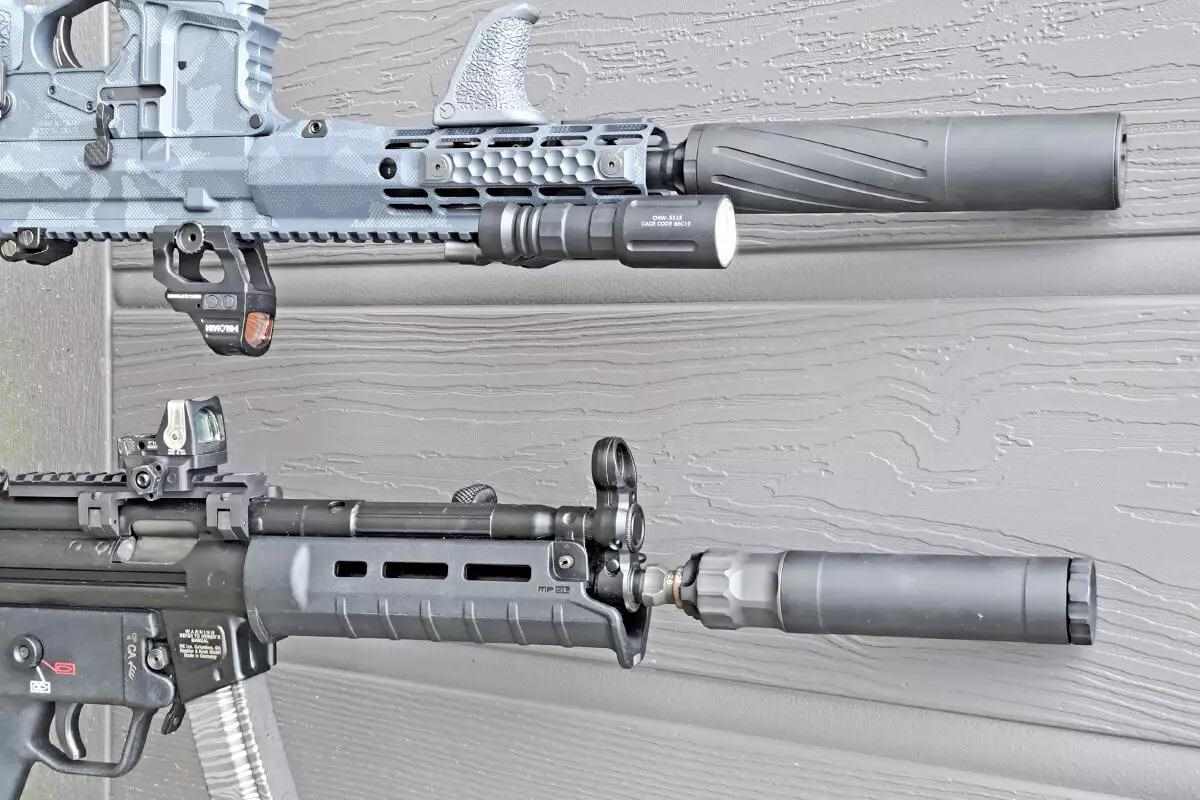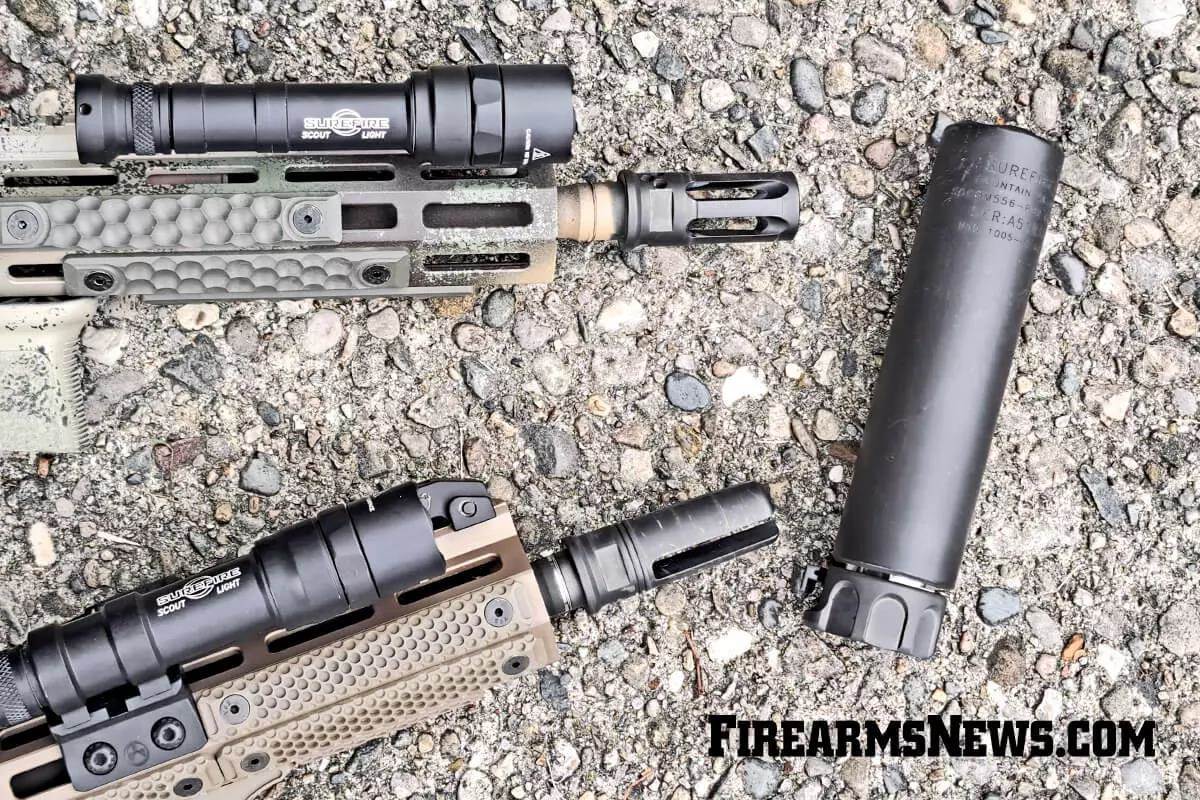I’m unusual in that I spent a lot of time shooting suppressed guns long before I ever owned a suppressor. But, I discovered, there is a difference between simply shooting a gun equipped with one and actually owning a suppressor. This past year, I became the proud owner of three suppressors purchased through Silencer Central, and learned a number of surprising things in a very short period of time.
1. Suppressors are amazing heat sinks.
This I think was the biggest surprise to me, as previously whenever I would shoot a suppressed gun, I would then hand it back to the manufacturer. I knew they got hot, but dear God… If you’re running pistol calibers, or subsonic 300 Blackout, your can might take quite a while to heat up, and unless you’re doing a lot of rapid fire might never get too hot to touch. However, if you are shooting an actual rifle, that suppressor will get hot. Very hot, very fast. It traps all the heat that otherwise would be shooting out into the atmosphere, and then—surprise bonus—radiates it back to you, into your barrel and handguard! Wearing a suppressor, your gun itself will get noticeably hotter. My Daniel Defense Mk 18 normally takes three 30-round mags through it rapid-fire before the handguard gets a bit toasty for a bare hand, but when I attached my Surefire SOCOM556 RC2 to it, I barely got through 50 rounds before the gun was sizzling my fingers, and it took FOREVER to cool down. The more metal there is in the suppressor, the longer it will take to cool down…and there’s a lot of metal in that Surefire. A suppressor will renew your interest in gloves, rail covers, vertical foregrips, hand stops, etc., anything and everything that gets your hand further away from the barrel or provides another layer of insulation. And get you researching suppressor covers, as accidentally touching that griddle-hot can will be an instant life lesson.
2. Sometimes Small and Light is Better than Quiet

5.56 is arguably one of the top three most popular calibers in the U.S. to suppress (along with .22 and 9mm). But unlike those two calibers, 5.56/.223 remains supersonic no matter what, which means even with a suppressor in place, your 5.56/.223 AR is not ear safe. It’s not quiet, it’s just not as noisy. So, noise reduction in a 5.56 can isn’t nearly as important as other factors, such as size and weight. I love everything about my Surefire SOCOM556 RC2 but the weight—that convenient QD attachment adds weight, as does the beefy military-grade construction, and as a result you really feel the weight (17 ounces) when that suppressor is attached. It immediately got me interested in titanium direct thread suppressors, some of which are nearly half the weight. I barely feel the weight of my Banish 30, a mostly titanium can that in short configuration weighs just 11.2 ounces. A former Green Beret I know loves the durability of the Surefire suppressors, but chooses their Mini simply because it is the shortest and lightest, and the increased noise doesn’t matter to him. Our own David Fortier has spent a lot of time looking at different (lighter) mounting options for his various 5.56 YHM suppressors, and figured out how to cut the weight of one of them by 7 ounces simply by removing a QD attachment mount and swapping out a factory steel part with an aftermarket titanium one from Rearden Manufacturing, which specializes in lighter/improved parts for mounting suppressors (ReardenMFG.com)
3. Sometimes Quiet is the Only Thing that Matters

I don’t consider any suppressor “ear safe” with supersonic calibers, no matter what their manufacturer might claim, or what the OSHA decibel standards are. But an uncomfortably loud crack when hunting with a suppressor is hugely different than touching off a .300 WinMag while hunting with no suppressor and no hearing protection. Subsonic calibers, on the other hand, are a completely different animal. If you’re shooting subs, you have a suppressor on that gun because you want it to be quiet. As close to silent as possible. Unfortunately, almost no gun/cartridge combination apart from some .22s are Hollywood quiet through a suppressor, but you still want to get as close to 0dB as possible. And I’ve found that not every suppressor is the same when it comes to noise reduction. Generally, the bigger the suppressor, the quieter it will be, but internal design does make a difference. With suppressors for 9mm and .45 ACP pistols, you have to balance the length and weight of the suppressor with your desire for noise reduction. With rifles, one caliber currently very popular to suppress is .300 AAC Blackout. With subsonic ammunition, this gun can be very quiet—but there is a huge difference in noise reduction with various .30 suppressors. Many .30 suppressors are meant to handle the blast of .308 Win and .300 WinMags, but that makes them less than ideal to shush the comparatively anemic subsonic 300 BLK. “General purpose” .30 cans work decently well with 300 BLK, but for the utmost in quiet you will most likely want a suppressor purpose-built for that caliber. The Q Thunder Chicken and the Surefire SOCOM300 SPS are two that immediately come to mind. Either will get your .300 Blackout as close to Hollywood quiet as possible. I’ve fired a 300 BLK Honey Badger wearing that Surefire can, and the bullet hits on steel at 50 yards were louder than the gun going off.
4. You Pay for QD in Both $$ and Weight…but Maybe It’s Worth It
The first suppressor I ever bought was a Surefire SOCOM556 RC2 solely because it came with Surefire’s QD attachment, which fits the can onto any AR with a compatible Surefire muzzle device. You can swap it between guns in just seconds, and the shift in point of impact is minimal. It is amazingly convenient, and if you have more than one rifle that you think you might want sharing a suppressor, cans that offer a quick attach-detach mounting system to a common muzzle device (and there are a number of them out there) might be exactly what you want. However, there is no such thing as a free lunch. Those QD mounts add length, cost, and weight to your suppressor, and require you to buy a specific type of muzzle device (which is another expense). If you are buying a suppressor with the intent of only putting it on one gun, and leaving it there, it makes much more sense to go with a direct-thread model.
Read the full article here


